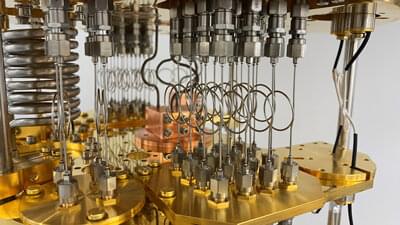https://youtube.com/watch?v=E1AxVXt2Gv4&feature=share
Marcus Hutter is a senior research scientist at DeepMind and professor at Australian National University. Throughout his career of research, including with Jürgen Schmidhuber and Shane Legg, he has proposed a lot of interesting ideas in and around the field of artificial general intelligence, including the development of the AIXI model which is a mathematical approach to AGI that incorporates ideas of Kolmogorov complexity, Solomonoff induction, and reinforcement learning.
This episode is presented by Cash App. Download it & use code “LexPodcast”:
Cash App (App Store): https://apple.co/2sPrUHe.
Cash App (Google Play): https://bit.ly/2MlvP5w.
PODCAST INFO:
Podcast website:
Apple Podcasts:
https://apple.co/2lwqZIr.
Spotify:
https://spoti.fi/2nEwCF8
RSS:
https://lexfridman.com/feed/podcast/
Full episodes playlist:
Clips playlist:
EPISODE LINKS:
Hutter Prize: http://prize.hutter1.net.
Marcus web: http://www.hutter1.net.
Books mentioned:
- Universal AI: https://amzn.to/2waIAuw.
- AI: A Modern Approach: https://amzn.to/3camxnY
- Reinforcement Learning: https://amzn.to/2PoANj9
- Theory of Knowledge: https://amzn.to/3a6Vp7x.
OUTLINE:
0:00 — Introduction.
3:32 — Universe as a computer.
5:48 — Occam’s razor.
9:26 — Solomonoff induction.
15:05 — Kolmogorov complexity.
20:06 — Cellular automata.
26:03 — What is intelligence?
35:26 — AIXI — Universal Artificial Intelligence.
1:05:24 — Where do rewards come from?
1:12:14 — Reward function for human existence.
1:13:32 — Bounded rationality.
1:16:07 — Approximation in AIXI
1:18:01 — Godel machines.
1:21:51 — Consciousness.
1:27:15 — AGI community.
1:32:36 — Book recommendations.
1:36:07 — Two moments to relive (past and future)
CONNECT:
- Subscribe to this YouTube channel.
- Twitter: https://twitter.com/lexfridman.
- LinkedIn: https://www.linkedin.com/in/lexfridman.
- Facebook: https://www.facebook.com/LexFridmanPage.
- Instagram: https://www.instagram.com/lexfridman.
- Medium: https://medium.com/@lexfridman.
- Support on Patreon: https://www.patreon.com/lexfridman







